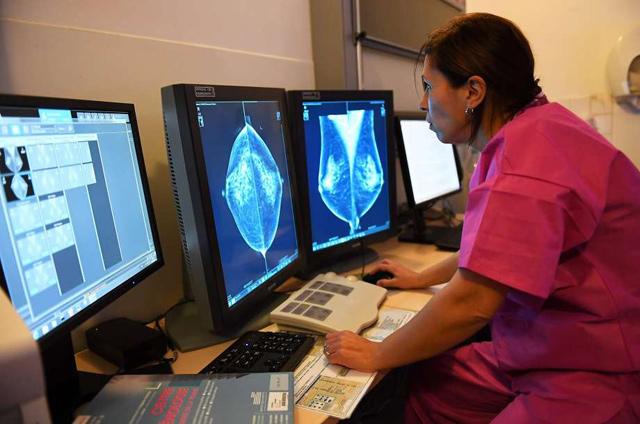You are here
Double mastectomy doesn’t boost cancer survival rates
By AFP - Sep 04,2014 - Last updated at Sep 04,2014
WASHINGTON — Women fighting cancer in one breast don’t benefit from having both breasts removed, according to new research out Tuesday that found long-term survival was equivalent after targeted surgery plus radiation.
Hollywood star Angelina Jolie famously announced last year she had a double mastectomy to reduce her risk of one day developing breast cancer, because she has a genetic mutation that substantially increases breast cancer risk.
And a growing number of women have begun choosing the most radical surgical option — the double mastectomy, to remove all breast tissue — after a diagnosis, even when cancerous tissue was found only in one breast.
But the researchers aimed to determine whether evidence showed double mastectomies led to longer lives for this category of breast cancer patients.
It was the first study to directly compare survival rates between the three main surgical interventions used in breast cancer: a single or a double mastectomy, or a lumpectomy to removing only the cancerous tissue, followed by radiation therapy.
The study found that in 2011, just over 12 per cent of patients diagnosed with a breast tumour opted for a double mastectomy, compared to just two per cent in 1998.
However, “we can now say that the average breast cancer patient who has bilateral mastectomy will have no better survival than the average patient who has lumpectomy plus radiation,” said lead author Stanford medical professor Allison Kurian.
Of the nearly 190,000 study subjects diagnosed between 1998 and 2011, 55 per cent had a lumpectomy followed by radiation therapy, 38.8 per cent had a single mastectomy, and 6.2 per cent had a double mastectomy.
Women of colour or minorities, and those of more impoverished backgrounds, were more likely to have undergone a single mastectomy than other groups.
In contrast, women who had both breasts removed were more likely to be middle class or wealthy, white, under the age of 50, or some combination.
The long-term survival rate for women who underwent lumpectomies with radiation was not statistically different from women who underwent double mastectomies, Kurian and co-author Scarlett Gomez found.
The long-term survival rate after single mastectomies was slightly lower, however the authors said it was unclear whether that could be attributed to differences in socioeconomic status.
They noted these women may have had other health problems and had more difficulty travelling to follow-up appointments for treatment, including for radiation.
Jolie carries a mutation in the BRCA1 gene that increases the risk of breast cancer by 85 per cent. After a double mastectomy, that risk falls to just five per cent.
The authors of this week’s study, published in the Journal of the American Medical Association, emphasised that their findings do not mean women with the BRCA1 mutation or another in the BRCA2 gene, or with a strong family history of breast cancer, should not have a double mastectomy.
In those cases, the precautionary surgery may be an effective choice, they said.
Related Articles
It’s long been known that faulty BRCA genes greatly raise the risk for breast cancer. Now scientists say a more recently identified, less common gene can do the same.
Women with breast cancer who get newer genetic tests to estimate their risk of recurrence may not be any more anxious about their test resul
AMMAN — The King Hussein Cancer Foundation (KHCF) on Wednesday held a virtual session for reporters to raise awareness about issues related

















